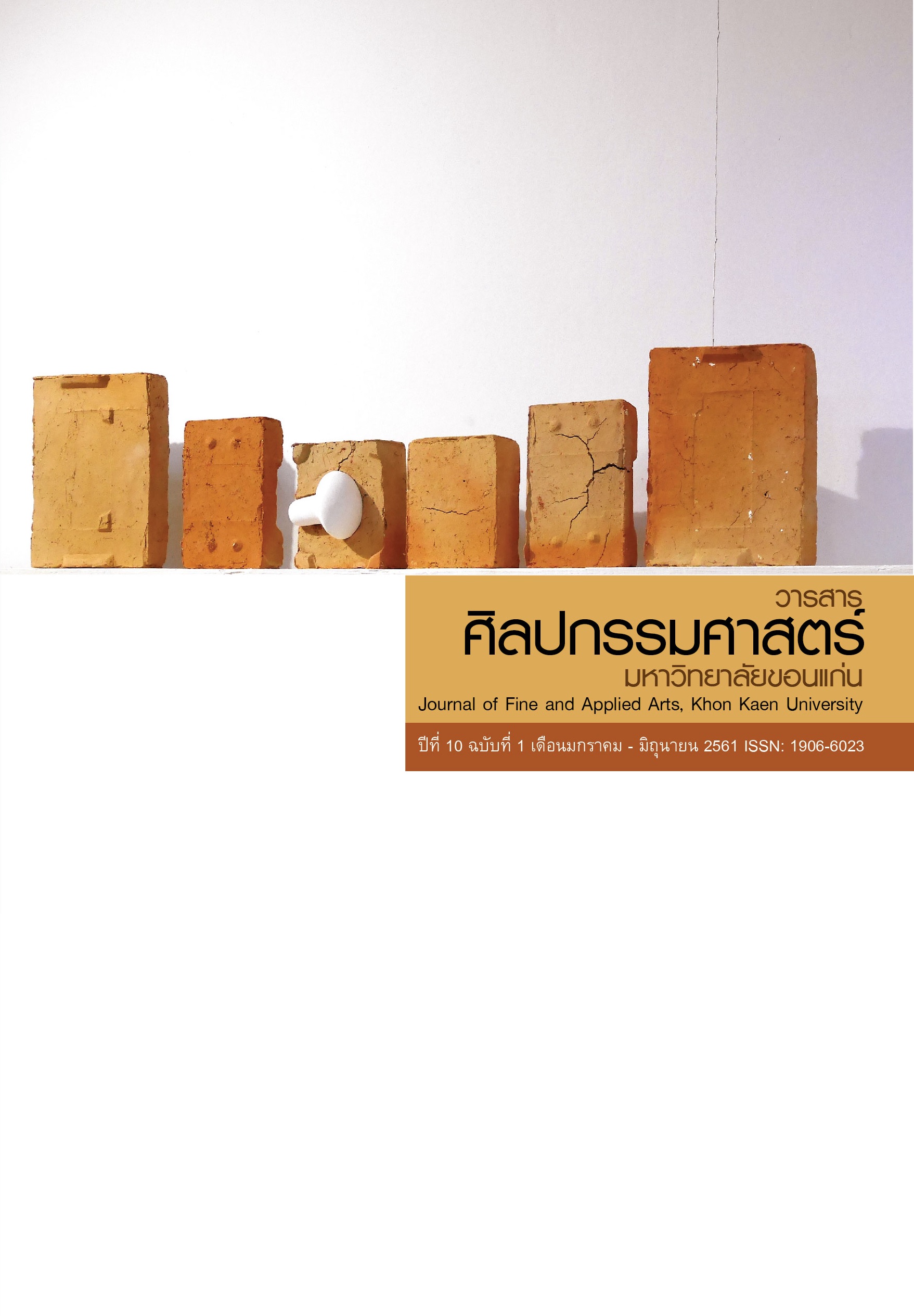Teaching module on listening skills applied from Orff, Kodaly and Dalcroze methods for grade 1 students
Main Article Content
Abstract
The purposes of this study were: 1) To construct teaching module on listening skills applying Orff, Kodaly, and Dalcroze methods for grade 1 students, and 2) To evaluate the effectiveness of teaching module on listening skills applying Orff, Kodaly, and Dalcroze for grade 1 students. The participants in the study were 25 grade 1 students from Assumption College Thonburi, in academic year 2015. The researcher was responsible in teaching 50-minute music lessons using the teaching module for the participants, once a week, for 12 weeks. The research instruments in this study consisted of: 1) activity plans, 2) Listening Skills Assessment forms were used as pretest and posttest in every lesson, and 3) Student Interview Questionnaires. Data collection was done in 3 parts: 1) pretest and posttest using Listening Skills Assessment forms, (2) observing students’ behavior during the music lessons, and (3) interviewing students to assess their attitude toward music lessons. The data of listening scores were analyzed by comparing the pretest with posttest listening scores of each students. The data from observing students’ behavior during music lessons and interviewing students to assess their attitude toward music lessons were analyzed using content analysis method.
The results of this study showed the effectiveness of the developed teaching module to improve students’ listening skills. The posttest scores of listening skills were higher than the pretest. Most of the students’ scores in every lesson were at “Good” level. The scores were 81.3% in listening to rhythm, 76% in listening to pitch, 69.4% in listening to musical expression, and 66.6% in listening to musical form. From observing students’ behavior and interviewing students to assess their attitude, most students enjoyed and intended to learn and cooperate in class. Moreover, they loved the music activities in the lessons, instruction media, and the proper length of the lesson.
Article Details
Content and information in articles published in the Journal of Fine and Applied Arts of Khon Kaen University is regarded as the opinion and sole responsibility of the author(s) directly; therefore, editors are not obliged to agree to or share any responsibility with regard to the content and information that appears within these articles.
All articles, information, content, image, etc. that have been published in the Journal of Fine and Applied Arts of Khon Kaen University is the copyright of the Journal of Fine and Appllied Arts of Khon Kaen University. Any person or organization who wishes to distribute all or parts of the articles for further dissemination or other usage must first receive permission from the Journal of Fine and Applied Arts of Khon Kaen University before proceeding to do so.
References
ณรุทธ์ สุทธจิตต์. (2544). พฤติกรรมการสอนดนตรี. กรุงเทพมหานคร : สำนักพิมพ์แห่งจุฬาลงกรณ์มหาวิทยาลัย.
ธวัชชัย นาควงษ์. (2543). การสอนดนตรีสำหรับเด็ก. กรุงเทพมหานคร : สำนักพิมพ์มหาวิทยาลัยเกษตรศาสตร์.
นันทิรัตน์ คมขำ. (2538). การศึกษาการใช้เพลงในการเรียนการสอนเด็กวัยอนุบาล. วิทยานิพนธ์ ปริญญาครุศาสตร์มหาบัณฑิต,สาขาวิชาการศึกษาปฐมวัย บัณฑิตวิทยาลัย จุฬาลงกรณ์มหาวิทยาลัย.
นวลจันทร์ จุฑาภักดีกุล. (2541). อิทธิพลแบบเฉียบพลันของการจับสัมผัสหลังการคลอดต่อการเปลี่ยนแปลงพัฒนาการการแสดงออก ของยีนส์ glucocorticoid receptor ในสมองลูกหนู. วิทยานิพนธ์ดุษฎีบัณฑิต ครุศาสตร์ (ประสาทวิทยาศาสตร์) บัณฑิตวิทยาลัย มหาวิทยาลัยมหิดล.
ศักดิ์ชัย หิรัญรักษ์. (2550). จุดมุ่งหมายทางการศึกษากับการสอนดนตรีศึกษา. สำนักงานส่งเสริมและพัฒนา วิชาการดนตรี บัณฑิตวิทยาลัย มหาวิทยาลัยมหิดล. อัดสำเนา.
สดับพิณ รัตนเรือง. (2542). Music of the Masters. กรุงเทพมหานคร : สำนักพิมพ์แห่งจุฬาลงกรณ์ มหาวิทยาลัย.
Flohr, J. W. (2004). The Musical Lives of Young Children. New Jersey : Prentice-Hall.
Pope, J. (2005). Dalcroze Eurhythmics Music Through Movement. Crawley : The University of Western Australia.
Schaefer, J. (1987). New Sounds: A Listener’s Guide to New music. New york : Mcgraw-Hill Book.


